
YANG Chung-Ming, Lost Paradise, 1997, Mezzotint, Engraving on Zinc plate
From Printing to “Print-Based Art”
Throughout the development of human civilization, printing has played a crucial role in the dissemination of knowledge. The creation of content, plate-making, and printing—drawing, carving, printing—formed the foundation of printing, and later, what came to be known in the East as printmaking. Over time, the materials and technologies evolved, and through the hands of artists, new mediums emerged into stunning, unprecedented artistic expressions.
Albrecht Dürer (1471–1528), a key figure of the Northern Renaissance, learned the crafts of drawing and engraving from his goldsmith father. Even in his youth, he applied these techniques to create outstanding woodcuts and engravings, earning acclaim throughout Europe. Though his works were sometimes practical or devotional, Dürer’s artistic genius elevated commercial and craft-based works to a new level—an undeniable historical fact.
Rembrandt in the 17th century, Goya in the 18th, and Degas, Pissarro, and Cassatt in the 19th, followed by Miró, Picasso, Munch, and ZAO Wou-Ki in the 20th century—these artistic giants each expanded the expressive power of printmaking. They pushed the boundaries of the medium, born from ancient printing practices, to new creative heights. To distinguish this work from commercial reproductions, the West now broadly refers to such original artistic prints as “Fine Art Prints.”
In the East, Chinese printing dates back to antiquity and reached technical and commercial maturity quite early. Unfortunately, under long-standing disdain for commercialism and the dominance of literati painting and calligraphy, printed images were often dismissed as cheap craft, unworthy of elite artistic circles. Only with the Western rediscovery and admiration for Japan’s Edo-period ukiyo-e prints did Eastern printmaking begin to receive renewed attention.
In Taiwan, printmaking—rooted in drawing, carving, and printing—has long been misunderstood and undervalued. Academic traditions, the trade of reproduction prints, and the rise of digital inkjet prints using the same terminology have all contributed to the public’s lack of appreciation for this art form.
That’s why Gallery de sol (Taipei, Taiwan), which has long studied, collected, exhibited, and promoted this medium, proposed the term “Print-Based Art” to better align with Western “Fine Art Prints.” This term refers to original art created from plates—wood, copper, rubber, acrylic, or screen—emphasizing the indirect and reproducible nature of the medium. It includes historical works like Chinese illustrated novels, ukiyo-e, European engravings, lithographs, and even Banksy’s stencil spray art—each a contemporary interpretation of print-based expression.
Introducing this new term reflects a deep hope: that the Chinese-speaking world will rediscover the richness of print-based art and join in cherishing this global cultural heritage. One day, a visitor from Taiwan to MoMA in New York will understand why Munch’s work on display is a woodcut rather than an oil painting; why ZAO Wou-Ki first captivated Parisians through his exceptional prints; and why leading museums worldwide actively collect print-based masterpieces. In art history, print-based art has always had its rightful place—and our museums, galleries, and collectors should no longer ignore it due to past misunderstandings.
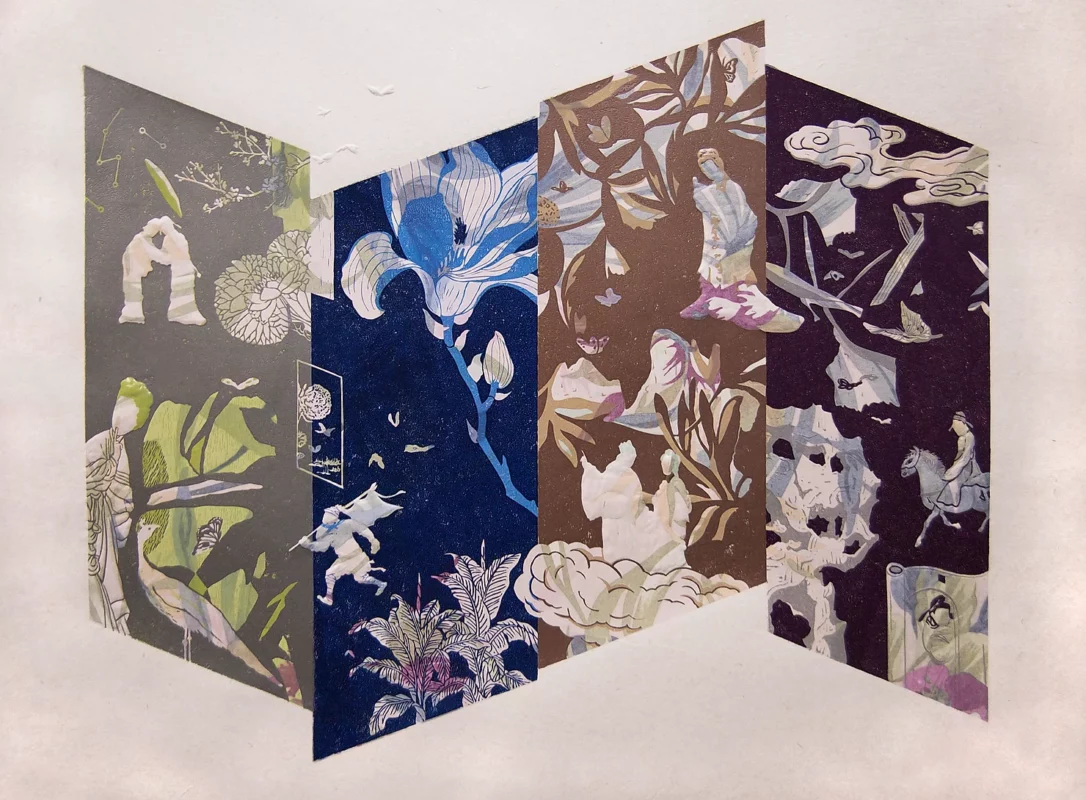
YANG Chung-Ming, A Dream of Wandering in a Garden, 2015, Multiple-plate Linocut, Chine-collé, Embossing
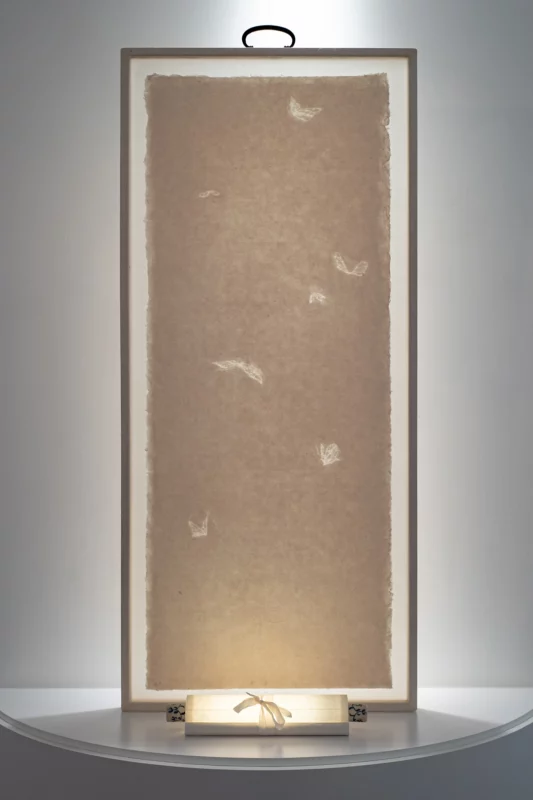
YANG Chung-Ming, Byroads, A Time Odyssey: Paper Blooming, 2016, Watermark, Handmade Paper, Embossing
From the Academy to the Palace Museum: Expanding Boundaries from Hand to Heart
Print-based art in Taiwan has long been considered a minority within the already niche field of fine art. Yet since the 1970s, thanks to Professor LIAO Shiou-Ping’s advocacy and educational outreach, most art schools have introduced related courses—though primarily focused on technical transmission. It was in this historical context that YANG Chung-Ming began his print-based journey.
As a model student in Taiwan’s art education system, YANG advanced through the ranks—from high school art classes to art university and graduate school—thanks to his exceptional talent and academic performance. Along the way, he explored drawing, painting, sculpture, mixed media, and installation, all of which nourished his creative foundation. But a fateful encounter with mezzotint during university would become the defining theme of his artistic life.
Mezzotint, a noble intaglio technique, demands extraordinary patience, precision, and mastery of plate-making and wiping. Its difficulty and sensitivity allow for the subtlest tonal transitions, earning it a regal status among copperplate methods. Although it flourished in 17th-century England, few craftsmen pushed it beyond its classical peak, and its technical challenges deterred many artists. Yet YANG was captivated by its meticulous process and intricate visual results. From that point forward, he practiced tirelessly and soon earned multiple awards for his mezzotint works.
Fortunately, his early achievements did not trap him in youthful glory. Though fascinated by technique, YANG remained attuned to his inner creative drive. After graduation, instead of diving into the art market, he chose to immerse himself in real life—gaining insight into human experience and ultimately realizing a core belief: “Technique should serve creative expression.” This separates him from many printmakers.
“In my creative world, materials exist to serve the theme… It sounds simple, but I only came to understand this through years of practice. Using printmaking as a tool for artistic expression is fundamentally different from merely producing print works. The former harmonizes concept and technique; the latter places technique above all.”
Contemporary art emphasizes the expression of artistic vision. For print-based art—a field deeply rooted in technique—it is only when an artist balances concept and skill, and clearly understands their relationship, that the medium can evolve and transcend.
In 2015, YANG was invited by the National Palace Museum in Taipei to respond to historical Ming and Qing woodcuts with a contemporary print-based work. The result was A Dream of Wandering in a Garden, a piece that bridged East and West, ancient and modern, through theme, medium, and method.
“To develop this piece, the Palace Museum exceptionally allowed me access to rare ancient texts… I realized that everything I had learned—techniques, signatures, even the concept of authorship—was framed by the modern Western art world. In Chinese cultural context, printmaking still lingers as a textual illustration tool—it hasn’t yet modernized or contemporized. That realization was like discovering a vacuum in history. So I asked myself: what would a contemporary Eastern print-based art look like?”
Through this retrospective lens, YANG created the Byroads, A Time Odyssey series. His works incorporated traditional Chinese themes and aesthetics, even reviving the nearly lost traditional embossing technique known as “Gonghua.” But at the same time, the series raised new contemporary questions. By attempting to fill a 300-year historical gap in Chinese printmaking, YANG expanded its boundaries—questioning carving’s relation to calligraphy, rethinking the concept of a “matrix,” and exploring the unique “multiplicity” of prints that allows simultaneous exhibition in different places. His work invited viewers into a new dimension—one built by print-based art, echoing the past yet unlike anything seen before.

YANG Chung-Ming, Timeless: The Portrait of Lovers / Objects, 2019, Mezzotint brass plate, mechanical cuckoo, old mechanical clock, type; movable type printing, hand-colored brass frame

YANG Chung-Ming, Timeless: The Portrait of Lovers / Objects (Detail)
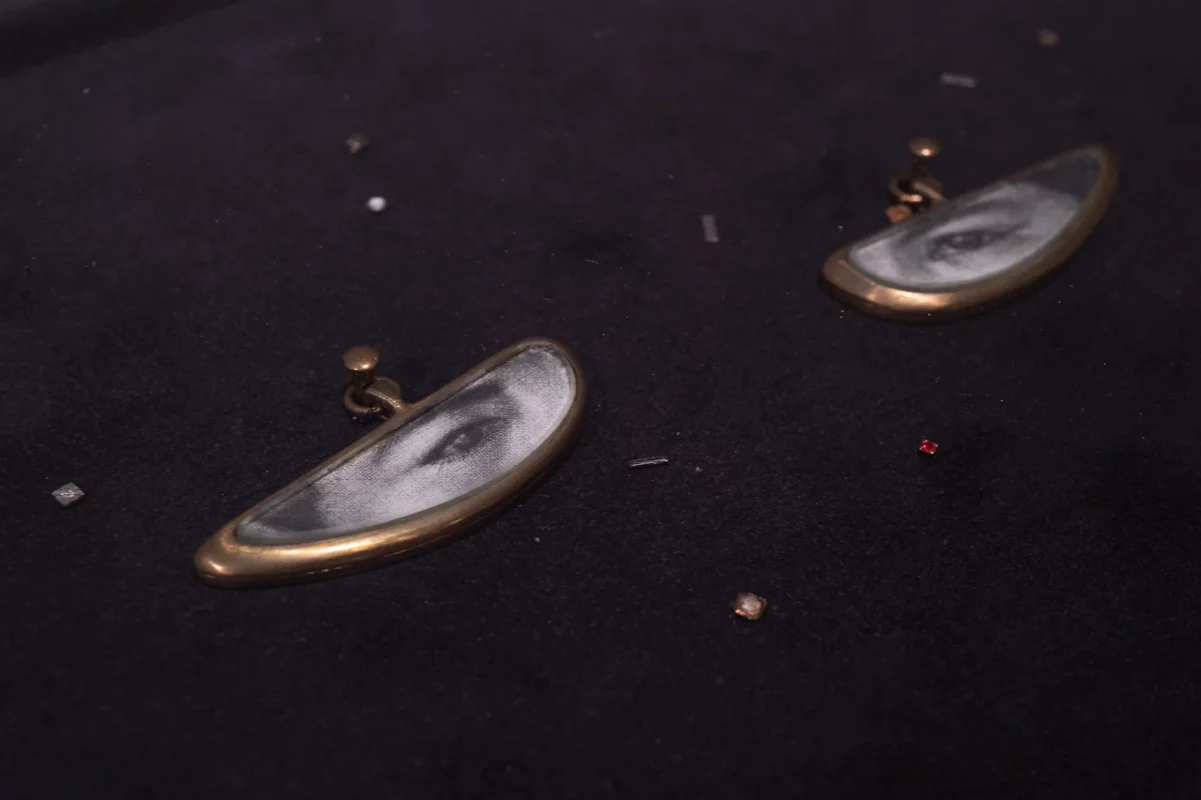
YANG Chung-Ming, Timeless: The Portrait of Lovers, 2019, Mezzotint, brass, glass, clock parts, black velvet box
The “Timeless” series, exhibited in both Taiwan and France in 2019, may be considered one of the most representative of YANG Chung-Ming’s artistic essence. It originated as the artist’s response to a memorial poem by Chen Chuan-Hsing’s reflection on poet Zhou Mengdie. The series completely breaks away from material or technical considerations, emerging instead from an inner emotional resonance that is then translated into the language of print-based art—allowing a unique chemical fusion of sensibility and rationality.
“Every one of my exhibitions feels like a research report. It may begin from a romantic impulse, but the process is a fusion of reasoning, hypothesis, and validation. Each experiment is driven by a theme that touches the heart. Through independent creative methods, I try to discover interactions I’ve never seen before—often to my own amazement after long hours in the studio. I truly enjoy this journey of uncovering new possibilities through creation.”
In the “Timeless” exhibition, YANG extensively employed mezzotint to serve emotional expression. The technique itself is like kindling light in darkness—mirroring the subtle, layered emotions of love and parting. Mezzotint’s infinite gradations of black perfectly reflect the undefined ambiguity of human emotions. Furthermore, by rethinking the concept of the “matrix,” he completely broke the traditional division between drawing, carving, and printing. When the plate itself becomes an independent artwork, what new landscapes are born? The piece The Portrait of Lovers boldly explored the rich potential when all creative processes align under a single emotional and thematic drive.
“Timeless” reveals YANG Chung-Ming as a contemporary artist who both breaks and rebuilds in print-based art. Once freed from material and technical constraints, how can this artform—with its irreplaceable craftsmanship—reach places no other medium can? Each experiment and self-challenge is essential for artistic breakthroughs. YANG walks a path that only print-based art can traverse, but more precious is his refusal to pause for applause. He continues forging ahead—driven by a deep desire for life, for meaning, and for creation.
Now in its fifth year, Gallery de sol’s annual “Summer International Printmaking Exhibition” featured the theme “Origin” and showcased many of YANG’s matrix (original plates), from award-winning mezzotints created in grad school to pieces from Byroads, A Time Odyssey and Timeless. Visitors could witness how he imagines the infinite possibilities of the “plate” and appreciate the complexity and richness of print-based art. In October, YANG will once again challenge boundaries with his upcoming exhibition Flora of Formosa, a large-scale solo project that integrates print-based principles with handmade papermaking, Japanese-era specimens, lab instruments, mounting methods, and fiber studies. Rooted in his consistent sensitivity to people, objects, and life, this bold new artistic form will lead viewers into a realm of quiet brilliance and emotional resonance—where “beyond ink” becomes more than a phrase; it becomes an experience.

Exhibition View: Summer International Print Project 2023: Origins
YANG Chung-Ming, Byroads, A Time Odyssey: Forgotten in Autumn (Linocut Plate), 2016, Reduction Linocut
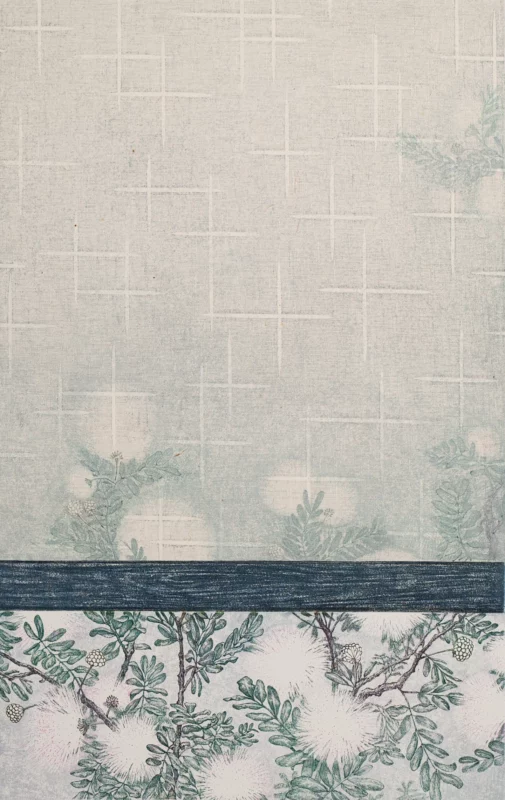
YANG Chung-Ming, Silent Fireworks: White Powder-puff, 2014, Intaglio, Engraving on acrylic plate, Chine-collé
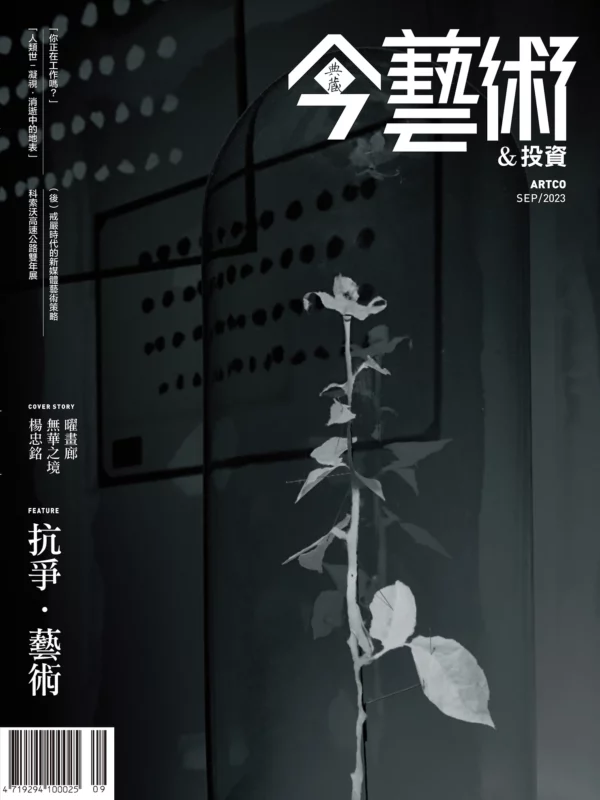
|Source|
Publication | ARTCO Monthly
Issue | September 2023 / COVER STORY
Work | YANG Chung-Ming, Flora of formosa: B612
Author | Sunny CHANG Ph.D, Director of Gallery de sol
Images | Gallery de sol



 中文
中文